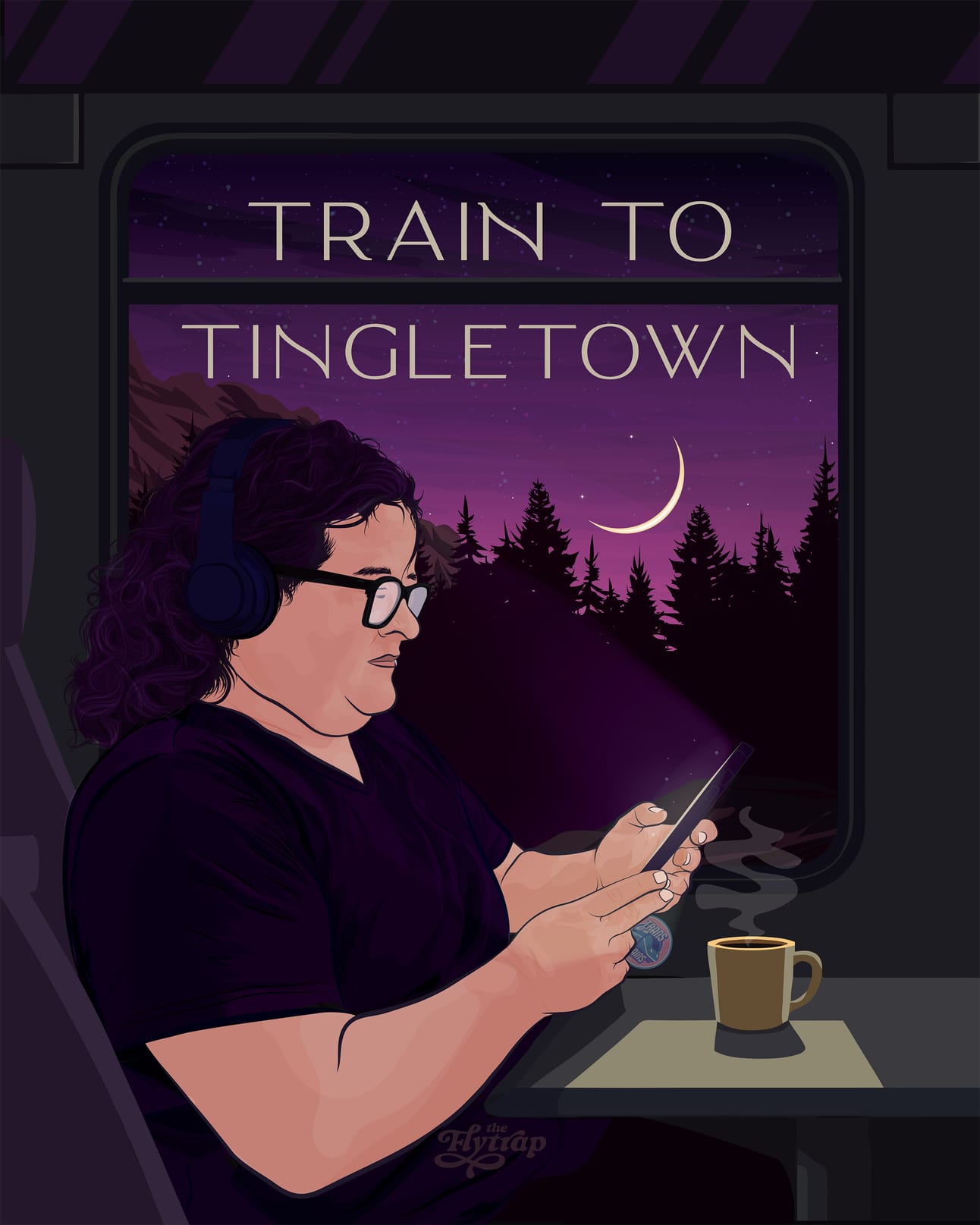Does It Really Matter if ASMR Is a Sex Thing?
The debate over whether ASMR is a fetish opens a can of worms about human sexuality — and workplace safety.

Note from The Flyteam: The Flytrap merch store is now open! Buy a poster of the art for this piece or get dripped out in the latest Flytrap merch.
Crinkly paper, rustling leaves, a clacky keyboard, someone puttering around the kitchen. The feeling of someone running their fingers through your hair. For some people, including me, these sensations provoke a response almost like floating, one that makes the skin prickle, an electric feeling often described as “the tingles.” Autonomous Sensory Meridian Response (ASMR), a term to describe the phenomenon, burst into the public eye in the 2010s. There are a few studies on ASMR, including one that’s been tremendously influential in the conversation: the 2018 paper “More Than a Feeling” about the emotional and physiological effects of ASMR. But there’s still considerable dispute over what, exactly, is going on here and if it should be considered a sex thing—a question that has big implications for ASMR content creators.
There is an incredible diversity of ASMR content that is designed to provoke the tingles—and parodies of the same— proliferating on the internet since the genre got its initial boom, especially on YouTube. Popular creators like Gentle Whispering (whose early work was a huge catalyst), WhispersRed, and Gibi ASMR rack up millions of views on videos such as one of my personal favorites, which promises a "tingly crystal shop" in the soft-spoken style, complete with crystal ball emojis. ASMR also lives on TikTok, in podcasts, and effectively anywhere fine sensory experiences are sold, including real-world events such as the “immersive theatre performance” Whisperlodge and hairplay spas, which tap into much older traditions across Asia.

